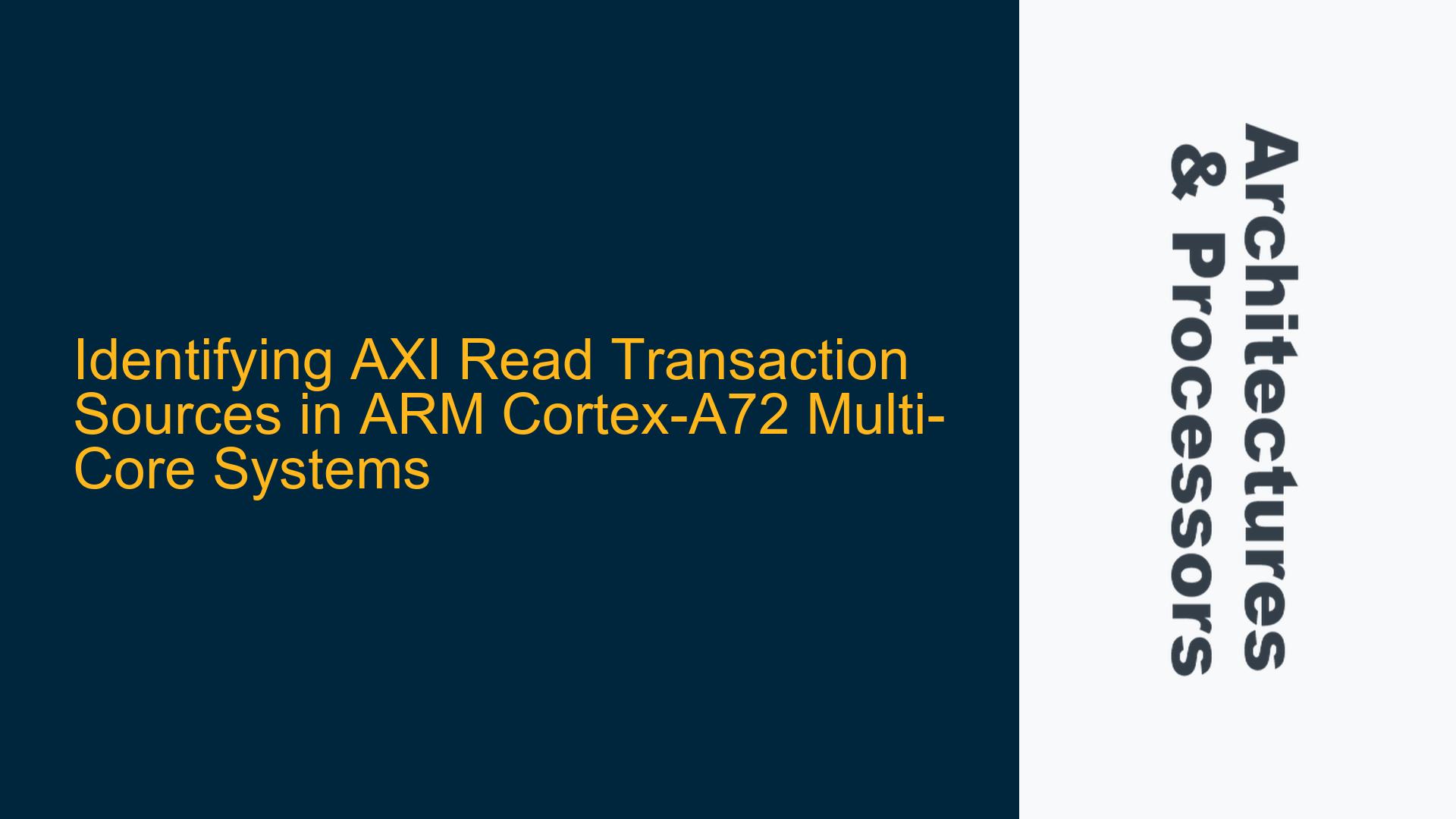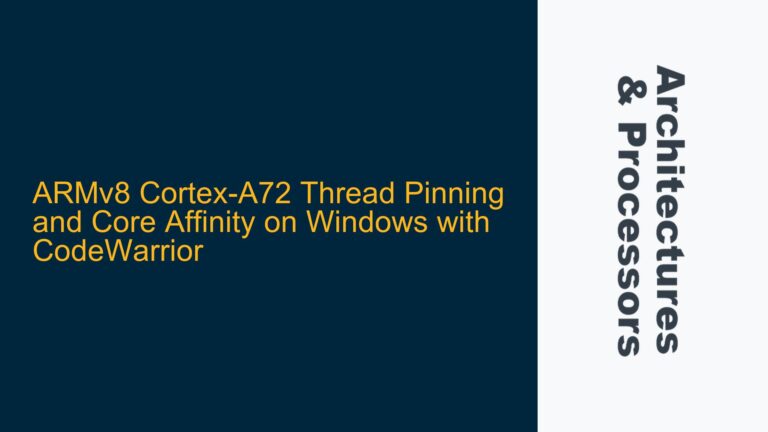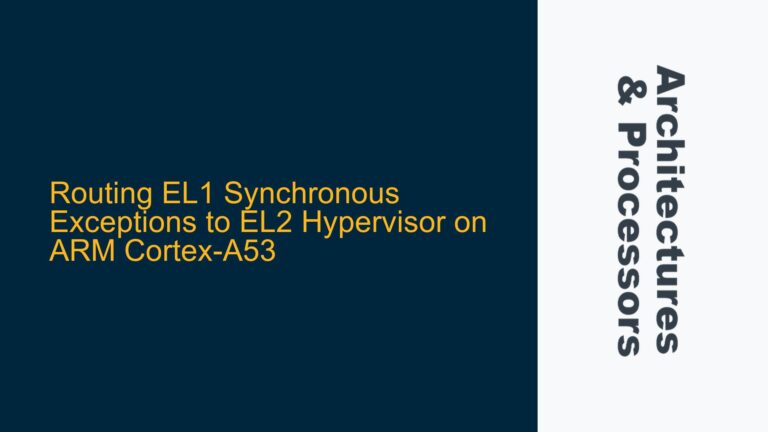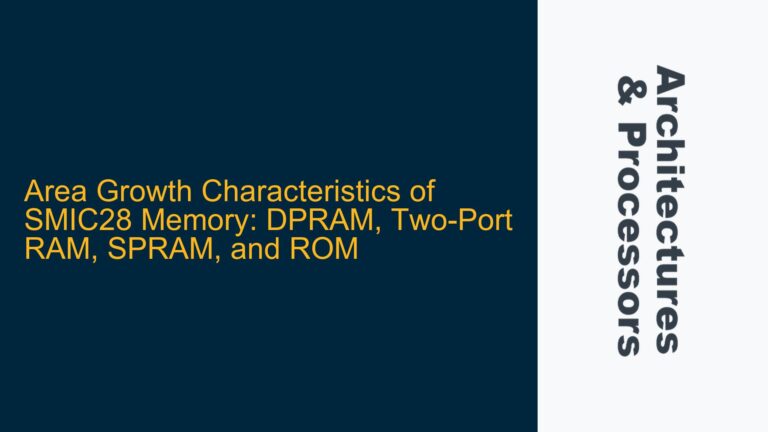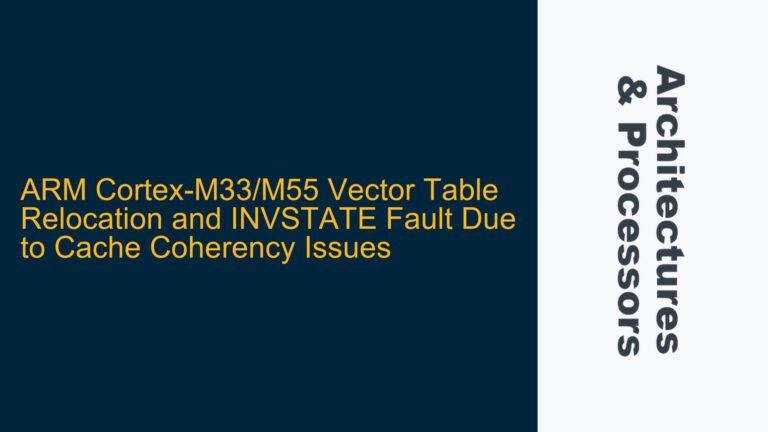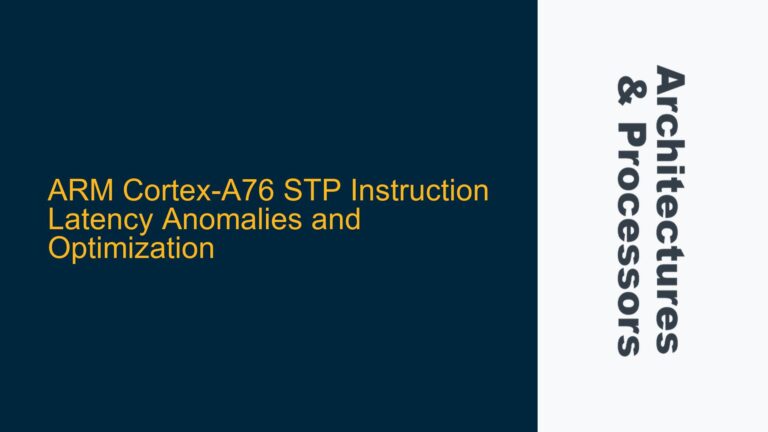ARM Cortex-A72 Multi-Core AXI Read Transaction Attribution Challenges
In multi-core ARM Cortex-A72 systems, one of the most intricate challenges is determining which core is generating a specific AXI read transaction. This issue arises due to the shared AXI read channel among all cores, which complicates the process of attributing transactions to their respective cores. When multiple cores are active, they all fetch instructions and data through the same AXI interface, making it difficult to distinguish the source of each transaction. This problem is particularly pronounced during the initial boot phase, where all cores start executing from a common instruction address and branch to their respective code segments based on their CPU ID.
The Cortex-A72 processor, part of ARM’s high-performance Cortex-A series, employs an Advanced Microcontroller Bus Architecture (AMBA) AXI protocol for its memory transactions. The AXI protocol is designed for high-speed communication between the processor and memory, but it does not inherently provide detailed information about the originating core for each transaction. This lack of attribution can lead to significant debugging challenges, especially when trying to optimize performance or diagnose issues related to cache coherency, memory access patterns, or inter-core communication.
The core of the problem lies in the fact that the AXI read transactions do not carry explicit identifiers that can be used to trace back to the originating core. While the AXI protocol includes fields like ARID (Read Transaction ID) and AWID (Write Transaction ID), these fields are primarily used for transaction ordering and coherency rather than core identification. In the case of the Cortex-A72, the ARID field does not consistently reflect the core number, especially when multiple cores are active. This inconsistency can lead to misinterpretation of transaction sources, complicating the debugging process.
ARID and AWID Field Behavior in Cortex-A72 ACE Protocol
The Cortex-A72 Technical Reference Manual (TRM) provides detailed information about the ARID and AWID fields in the context of the ACE (AXI Coherency Extensions) protocol. According to the TRM, the ARID and AWID fields are used to manage transaction ordering and coherency in multi-core systems. However, these fields are not designed to provide a direct mapping to the core number, especially for read transactions.
The ARID field, in particular, exhibits inconsistent behavior when multiple cores are active. When only Core 0 is active, the ARID field may cycle through values (e.g., 0 to 1 and back to 0) with successive read transactions. This behavior does not directly correlate with the core number, making it unreliable for core identification. When other cores become active and start generating read transactions, the ARID field may not accurately reflect the originating core, further complicating the issue.
The AWID field, on the other hand, appears to be more consistent in reflecting the core number for write transactions. This discrepancy between ARID and AWID behavior suggests that the AXI protocol’s handling of read and write transactions differs, particularly in how transaction IDs are assigned and managed. This difference is likely due to the way the ACE protocol handles coherency and ordering for read and write transactions, with write transactions requiring more stringent coherency management.
Implementing Core-Specific AXI Transaction Identification Techniques
To address the challenge of identifying the originating core for AXI read transactions in a Cortex-A72 multi-core system, several techniques can be employed. These techniques leverage the available hardware features and software mechanisms to provide more accurate core attribution for AXI transactions.
One approach is to use the CPU ID to map transactions to their respective cores. Each core in the Cortex-A72 processor has a unique CPU ID, which can be used to differentiate between cores. By incorporating the CPU ID into the transaction monitoring process, it is possible to attribute transactions to their originating cores more accurately. This can be achieved by modifying the boot code to include the CPU ID in the transaction metadata or by using hardware performance counters to track core-specific transaction patterns.
Another technique involves leveraging the ACE protocol’s ARID and AWID fields, despite their limitations. While the ARID field may not consistently reflect the core number, it can still provide some level of transaction differentiation. By analyzing the ARID field in conjunction with other transaction attributes (e.g., address ranges, transaction types), it is possible to infer the originating core for certain transactions. This approach requires a deep understanding of the ACE protocol and the specific behavior of the ARID field in the Cortex-A72 processor.
Additionally, hardware performance monitoring units (PMUs) can be used to track core-specific transaction patterns. The Cortex-A72 processor includes a set of PMUs that can be configured to monitor various performance metrics, including memory transactions. By configuring the PMUs to track core-specific transaction counts, it is possible to gain insights into the transaction patterns of each core. This information can be used to attribute transactions to their respective cores, even in the absence of explicit core identifiers in the AXI protocol.
Finally, software-based techniques can be employed to enhance transaction attribution. For example, the boot code can be modified to include core-specific markers in the transaction stream. These markers can be used to identify the originating core for each transaction, providing a more accurate attribution mechanism. This approach requires careful coordination between the boot code and the transaction monitoring tools to ensure that the markers are correctly interpreted.
In conclusion, identifying the originating core for AXI read transactions in a Cortex-A72 multi-core system is a complex challenge that requires a combination of hardware and software techniques. By leveraging the CPU ID, ACE protocol fields, hardware performance counters, and software-based markers, it is possible to achieve more accurate core attribution for AXI transactions. These techniques provide valuable insights into the transaction patterns of each core, enabling more effective debugging and optimization of multi-core systems.
